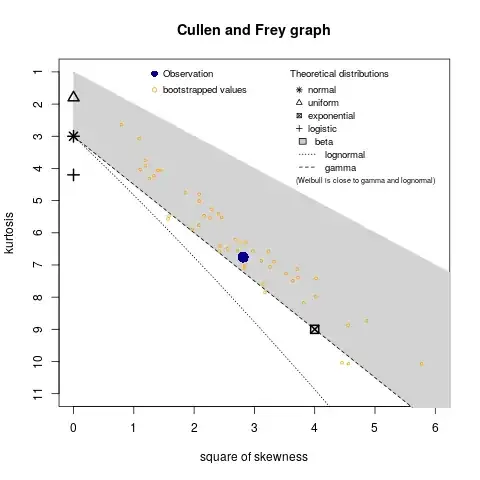I am using Mathematica to model the distribution of the data below and I test the fits with AD, CVM and KS but none of them seems to work I was told that my data may have an excessive amount of ties. What kind of alternative tests that deal with such an issue ?
data = {0.180723, 0.181208, 0.182213, 0.1875, 0.1875, 0.1875, 0.1875,
0.1875, 0.1875, 0.190476, 0.191041, 0.19174, 0.192308, 0.192513,
0.193038, 0.194118, 0.194858, 0.195172, 0.196141, 0.196507, 0.196911,
0.19717, 0.199725, 0.2, 0.2, 0.2, 0.2, 0.2, 0.2, 0.2, 0.2, 0.2,
0.204804, 0.204887, 0.206148, 0.207435, 0.208861, 0.211034, 0.213389,
0.214286, 0.214286, 0.214286, 0.215247, 0.218447, 0.22028, 0.221334,
0.221519, 0.222222, 0.224227, 0.224359, 0.225352, 0.226485, 0.230769,
0.230769, 0.230769, 0.230769, 0.230769, 0.230769, 0.231561, 0.23622,
0.239075, 0.24, 0.24, 0.241667, 0.241758, 0.246269, 0.247842, 0.25,
0.25, 0.25, 0.25, 0.25, 0.25, 0.25, 0.25, 0.25, 0.25, 0.25, 0.254902,
0.26087, 0.26087, 0.264706, 0.269461, 0.272727, 0.273684, 0.277778,
0.287576, 0.28934, 0.295775, 0.298013, 0.3, 0.3, 0.3, 0.3, 0.304124,
0.305085, 0.310345, 0.333333, 0.333333, 0.333333, 0.333333, 0.333333,
0.333333, 0.333333, 0.333333, 0.333333, 0.333333, 0.333333, 0.357143,
0.36, 0.375, 0.375, 0.375, 0.375, 0.375, 0.387097, 0.4, 0.409091,
0.409091, 0.5, 0.5, 0.6}
